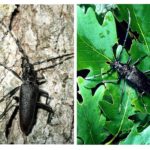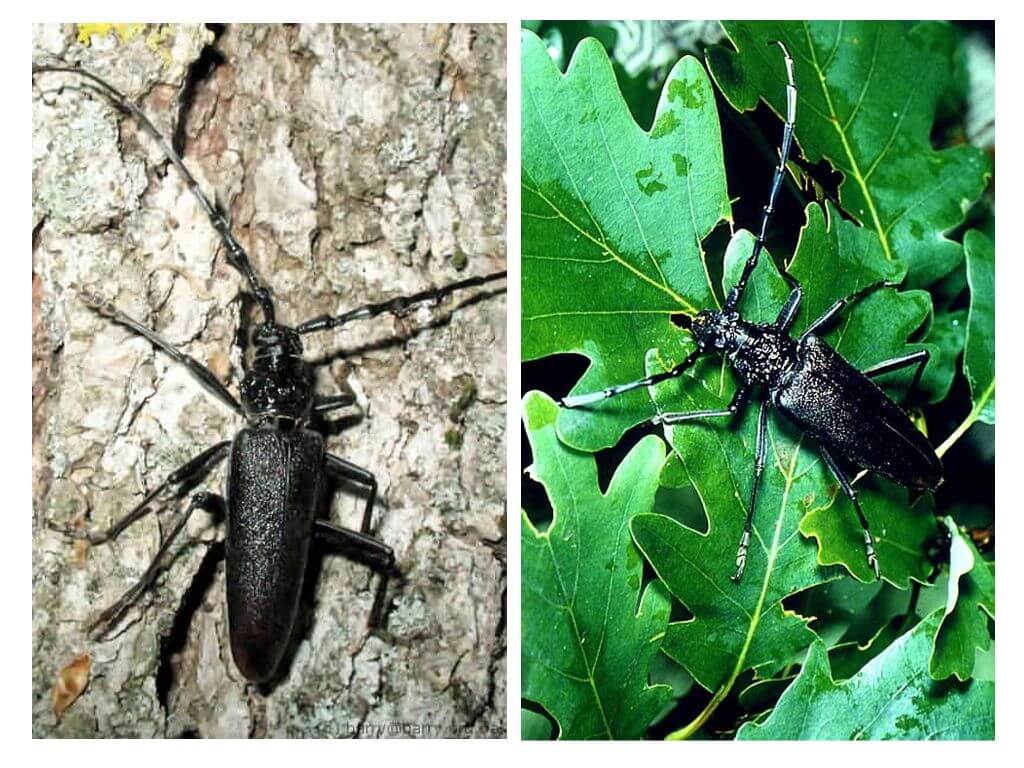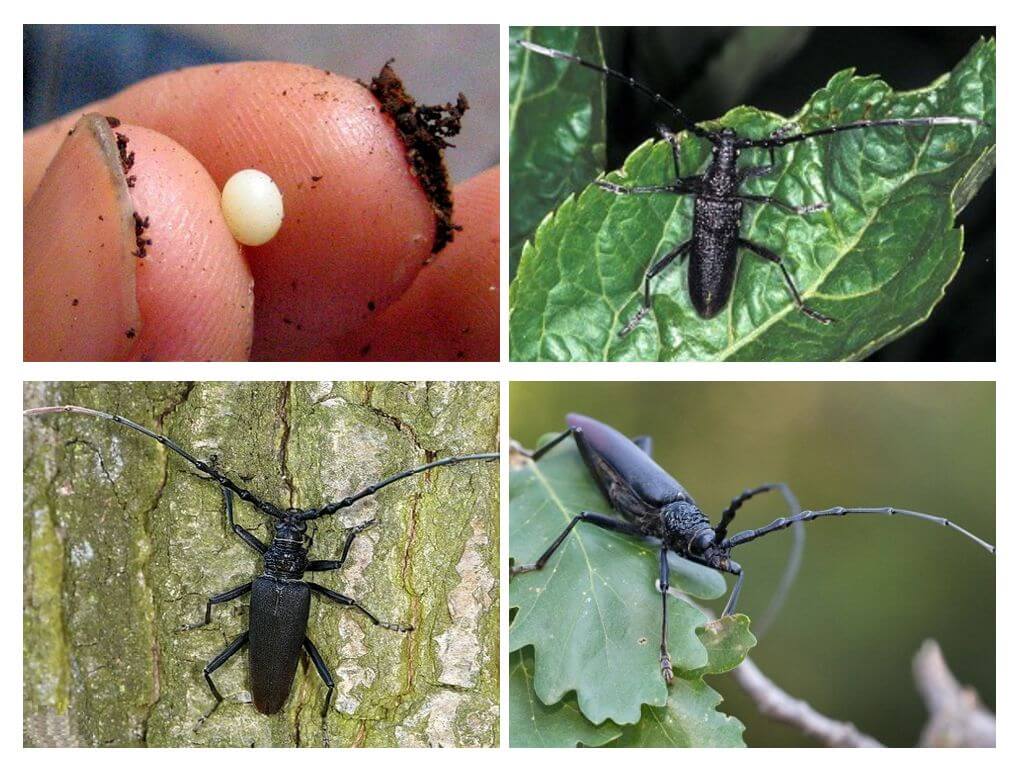Big Oak barbel photos and description
- Oak barbel
- Beetle lifestyle
The big oak barbel is one of the most beautiful and large woodcutter beetleshaving Mediterranean roots. Insect can be found in Europe and in Africa. It is also distributed in the open spaces of our country, in Belarus, Ukraine and in the Caucasus. The barbel became popular not only because of its large size (its body length can reach up to 6.5 cm), the insect is one of the most dangerous pests of oak wood. Who is the oak barbel, or as it is also called the black oak barbel, this article will tell.
Special features
The big oak barbel is a rather large beetle, the body of which has a brilliant black-resin color. A feature of this type of barbel is a mustache. To the touch they are as silky as the abdomen of the insect. In females, their size corresponds to the body length, while in males they are much longer. The first mustache segment is almost dull, as it has a densely marked dotted line. The sizes in length and width of the second segment are approximately comparable.
The elytra have a smooth surface, and only their apex is covered with a red-red hair. Two pairs of spines are located on the wrinkled pronotum. Below you can see what the oak barbel looks like in the photo.
Lifestyle
Large oak whiskers leave their secluded shelters in late May. They are particularly active at the beginning of summer, preferring flights during the daytime. To their favorite habitats can be attributed to detached trees or oak forests.
Interesting!
More often insects lodge on trees emitting a special liquid - gum, which they like to feast on. Having settled in the wood of the tree, the beetles gnaw through long tunnels in it, which causes the plant to “cry” (sap).
Much less often large oak barbel can be found on nut or apple trees.They do not have a great love for ash, hawthorn and hazelnut.
Breeding
Despite the fact that a large oak barbel lives for about 3 months, the female has time to lay about a hundred eggs for this period. She looks for a place for laying with the help of a mustache, which serves as an organ of smell for her (the males with the help of a mustache look for a partner). When choosing a tree that serves as a mustache and a house and a source of food, insects examine its condition. More often beetles settle in dead or decaying wood. But they can choose a healthy tree, and this is detrimental to man.
Usually the cradle for the future offspring of the female makes in the cracks of tree bark. Particularly suitable for this are old oaks, hornbeams, elms or beeches. After 15 days, larvae emerge from the eggs, which have been developing for more than two years. The photo and description of the larva of a large oak barrel differs little from the larvae of its relatives. This is a fairly large white or yellowish creation, which develops at a slower pace. The biennial larva grows to 5-6 cm, it can grow to 9-10 cm, and up to 2 cm in diameter, according to another one-year incident.
On a small, brown-red tint to the head of the larva there are 3 peepholes and powerful jaws.Along the passages gnawed in the wood, it moves with the help of abdominal and spinal growths, which are also called corns. Before the pupation period occurs, the larva gnaws a tunnel in the tree, whose length can reach 1 meter. At the end of such a stroke, the larva pierces an oval hole, which serves as a bedroom for the future pupa. From this shelter she makes another tunnel through which in the future an adult individual of a large oak barbel will emerge. In the meantime, the larva closes it with particles of bark and wood fibers.
On a note!
The process of formation and growth of a large oak barbel, starting from an egg and ending with an adult individual, lasts about four years (depending on habitat conditions and weather).
About enemies
The oak barbel beetle has no fewer enemies than other insects have. The woodpecker, which with great pleasure eats the larvae living in the bark, is a particular danger to the tree pest. There are also insects that parasitize beetle eggs (encyrtids). Insect predators such as pestrika, the toss, or the nutcracker are also dangerous for him.
What harm does
The big oak barbel is one of the most dangerous wood pests.The damage they cause to the tree is already apparent after the beetle's larvae reach one year old. When a large accumulation of insects changes the color of the foliage and its condition, it becomes fading. Young shoots also dry up, which hinders the growth and development of the plant. Therefore desirable get rid of the pest. Damaged wood can later be used only as firewood.
Therefore, in the olden days, when a large settlement of beetles in an oak forest was discovered, they tried to get rid of infected plantings as soon as possible, uprooting or sanding all the remaining oak stumps. However, in our days, perennial oak forests are not so much left, and even a large previously mustache pest has become no less rare. In connection with which he was even brought into the Red Book.









